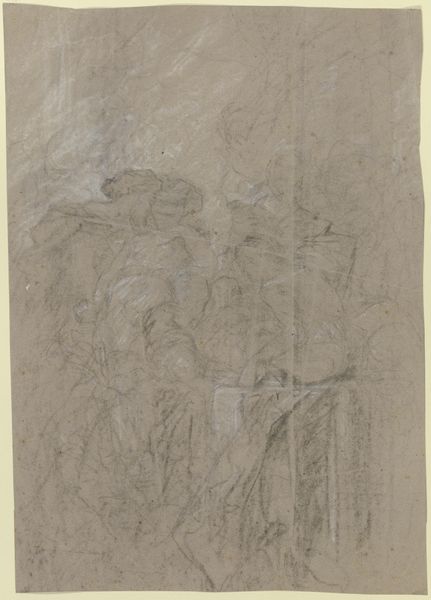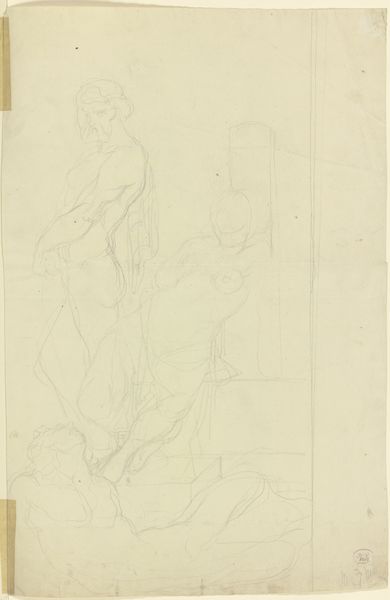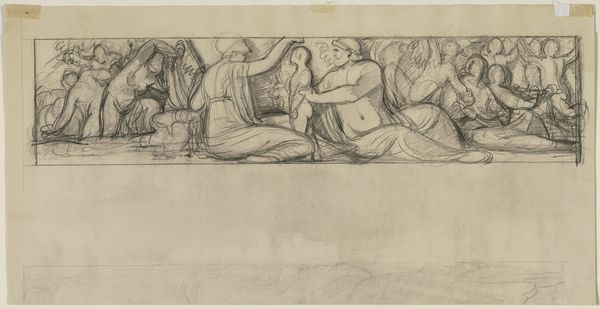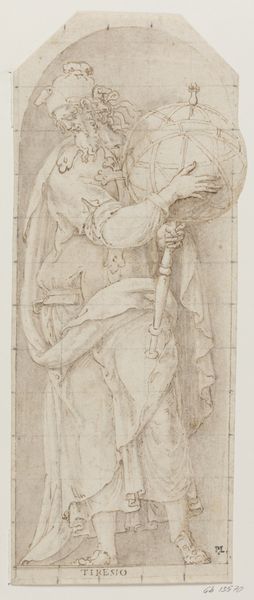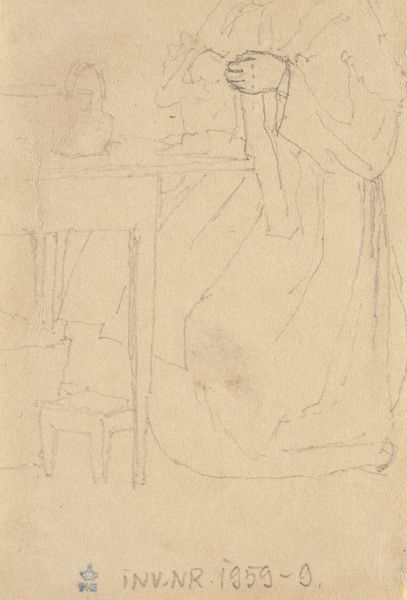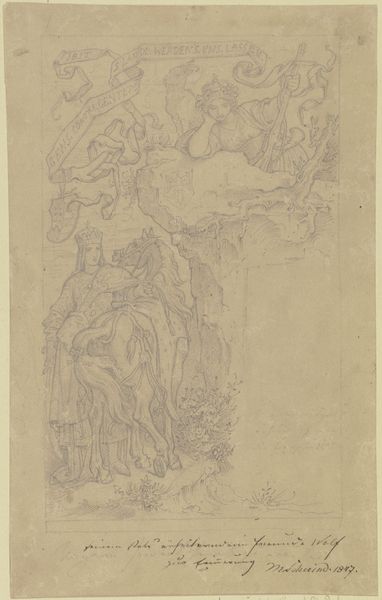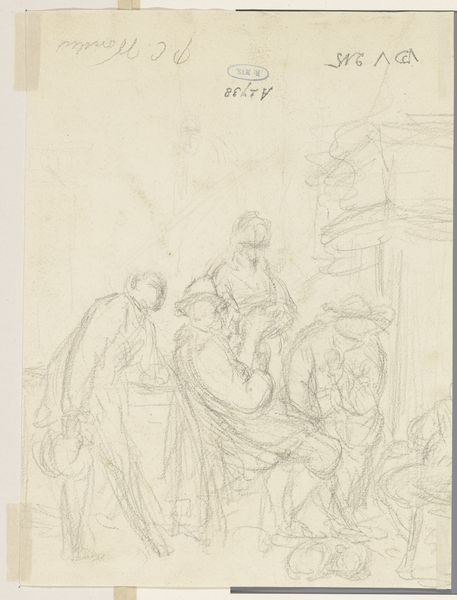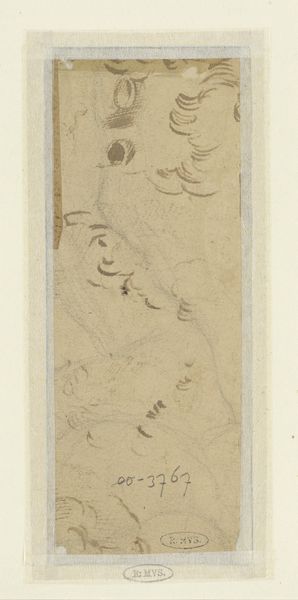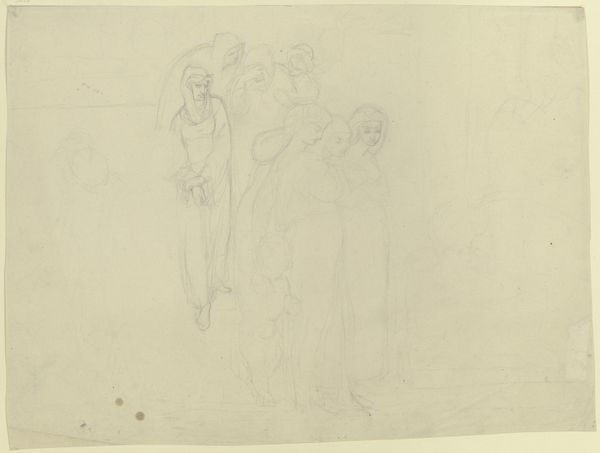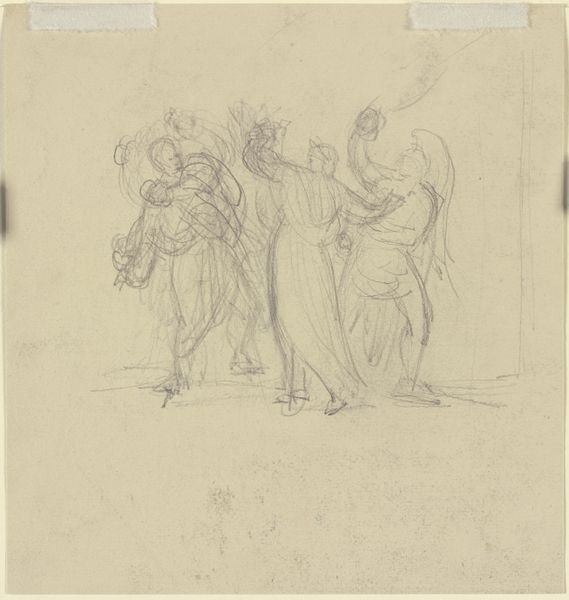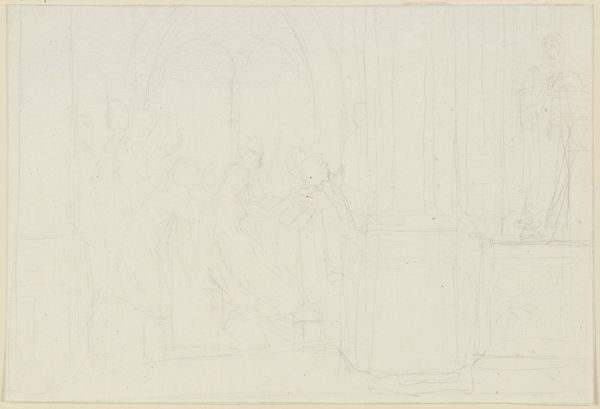
drawing, paper, pencil, graphite
#
drawing
#
16_19th-century
#
figuration
#
paper
#
romanticism
#
pencil
#
graphite
#
history-painting
Copyright: Public Domain
Philipp Veit made this drawing, Christus und Magdalena (Ostermorgen), using graphite on paper. The nature of the material itself gives us insight into the drawing’s purpose; Veit’s choice to sketch in graphite suggests that this is a preparatory study rather than a finished artwork. Its monochromatic nature allows us to appreciate how the artist built up layers of graphite, using smudging and hatching to create depth and shadow. Veit’s technique embodies traditional fine art practices and the value of skillful draftsmanship. The precision and control required to create such an accurate rendering would have necessitated years of training. But it also reminds us of the labor and time involved in the production of art, from the sourcing of materials to the countless hours of practice and refinement. Focusing on the materials and making of the artwork enables us to appreciate the drawing not just for its aesthetic qualities, but also as evidence of the artist's labor, skill, and creative process.
Comments
No comments
Be the first to comment and join the conversation on the ultimate creative platform.
